Iceland is open for travel. Check volcano updates here.
Language: English
Currency:
USD
ISK
USD
EUR
CAD
GBP
Planning on traveling to Iceland? Scroll through our ultimate guide for tips on all the best destinations, where to eat, what to pack and more so you can make the most of your vacation.
Once a hidden travel gem, Iceland has quickly become a popular bucket list destination. The picturesque location has inspired wanderlust in travelers worldwide and was even ranked one of the world's best destinations by National Geographic and Lonely planet.
Famous for its otherworldly landscapes, the small Nordic country boasts black sand beaches, active volcanoes, enormous glaciers, and crystalline ice caves. Glacier and ice cave excursions around Vatnajökull, Europe's largest glacier, are a winter favorite, along with the mystical Northern Lights of course.
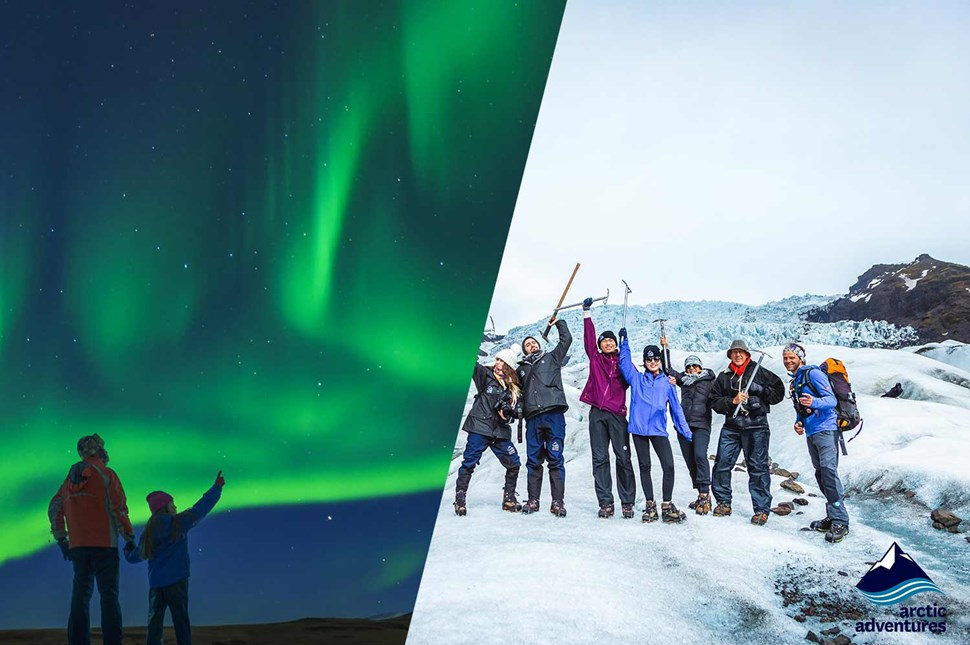
In addition to the fire and ice, travelers will be delighted to discover Iceland is actually quite green. The Nordic region is a nest of lush fjords, powerful waterfalls, verdant mountains, and steaming hot springs. Adventurers can enjoy trekking, camping, and kayaking activities during the summer months.
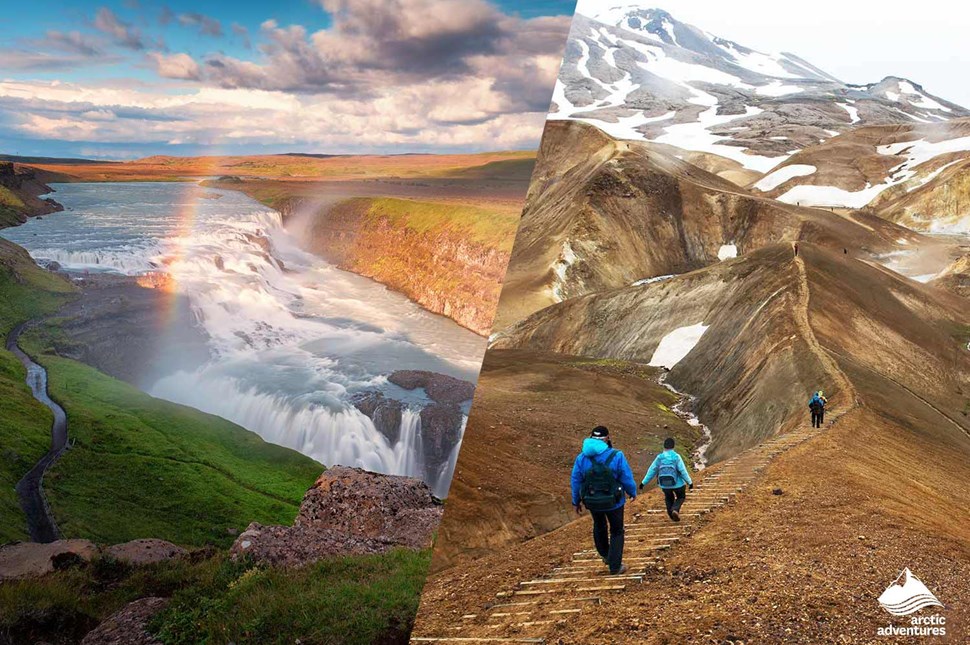
With the tourism boom, Iceland has put an emphasis on environmental initiatives to protect its pristine natural attractions and wildlife. The country is one of the world’s trendiest ecotourism spots and travelers are encouraged to be eco-conscious during their trip.
Beyond the endless attractions, this handy guide covers the weather, when to go, what to pack, how to get around, where to eat, how to be a responsible traveler and more!


The best time to go to Iceland depends on the traveler. Every season offers its unique set of things to do and see with tour options offered year-round. Summer is the high season for tourists because of the idyllic weather and long days. From late June through late September each month has almost 24 hours of daylight, so tourists can pack even more highlights into their itinerary.
Summer is particularly popular with trekking enthusiasts. The mild weather is perfect for hitting the trails and it's also the only time you can hike the iconic Laugavegur Trail. If hiking isn't your thing, don't worry, there are endless activities for all ages and travel styles including river rafting, snorkeling, and puffin watching.
As for winter, Iceland still draws crowds in the colder months. Winter in the country goes from late December through late March and offers a variety of activities such as skiing, snowmobiling, and ice-caving. And the main attraction of the season? The Northern Lights, of course. The best time to see the Northern Lights is from October through February, and there are aurora tours so you can catch the greatest views. Remember that in the winter there are only about five hours of daylight, so plan accordingly.
For even more advice on what season to plan your trip for, check out our blog on the best time to visit Iceland here.
Icelandic weather is famously unpredictable. One minute it’s sunny and the next it’s raining. Travelers should be prepared to encounter all types of weather no matter the season. Thanks to the ocean currents and location, the island has some of the warmest temperatures of all the Arctic countries.
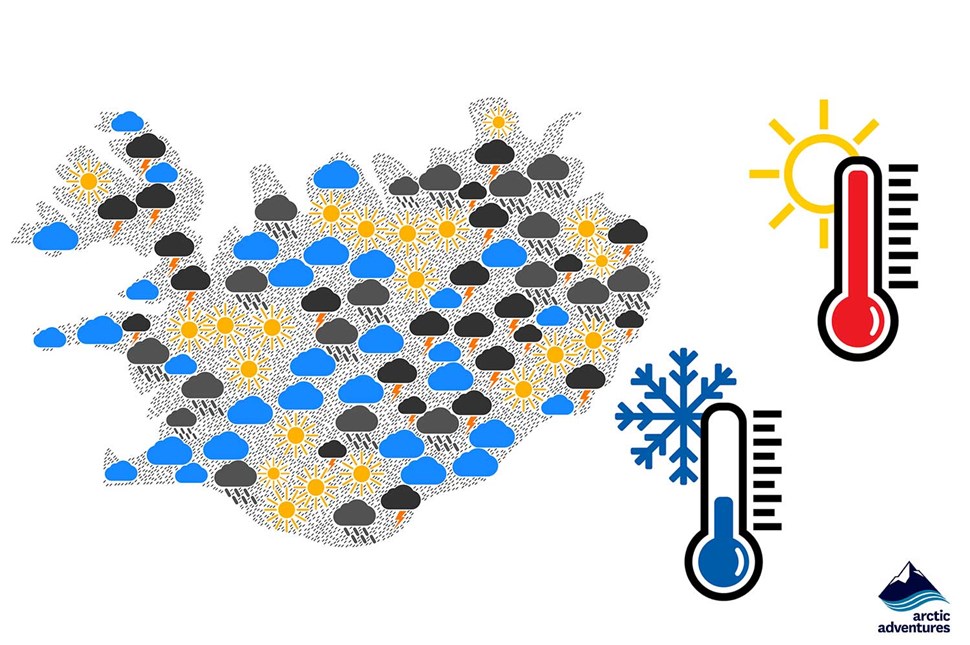
Temperatures in Iceland tend to be mild in both summer and winter. Summer visitors can expect cool, dry weather with temperatures hovering between 10°C (50°F) and 20°C (68°F). In the lowlands, the warmest days can reach 20-25°C (68-77°F), but this only happens a couple of times each summer.
Winter weather can get more extreme with heavy snow and rainfall. Still, temperatures in the colder months average at around 0°C (32°F). Pretty good for a northern winter! To stay ahead of the rapidly changing weather conditions you should always check the daily forecast and pack for all seasons.
Remember there is no bad weather, only bad clothing. Check out our what to wear in Iceland blog for the full guide on what to pack for Icelandic weather, as well as our Iceland weather page for more detailed temperature and climate information.
Tourists can reach Iceland by boat or plane. All international flights land at Keflavík International Airport, just a 40-minute ride from the capital of Reykjavik. Icelandair and WOW Air, both Iceland-based carriers, are the best options for direct and affordable flights to the island. WOW Air is the best bet for those flying from the U.S, with flights from San Francisco, Los Angeles, Chicago, Pittsburgh, Washington, D.C., Miami, New York, and Boston.
If you're a U.S.-based traveler you don’t need a visa to visit Iceland as it’s a part of the Schengen Agreement (26 European countries with visa-free borders). Always make sure your passport will be valid for at least three months after your departure date before you travel.

Icelandair tickets are more expensive than WOW Air but include complimentary drinks, in-flight entertainment, a free checked bag, a carry-on, and one personal item. The airline is also renowned for its free stopover program, where tourists can choose Iceland as a transatlantic stopover and spend up to seven nights in the country without any additional airfare costs.
For more details on how to find the best flight deals, when to book, national flights, and more, see our comprehensive guide to flying to Iceland here.
Iceland is an easy country for tourists to travel around. The Strætó, Reykjavik's only public transportation system, is affordable, easy to navigate and even features free Wi-Fi. The ticket fare is 470 ISK for adults and 235 ISK for disabled people and children aged 6-17. Riders that download the Strætó app can buy bus tickets, plan routes, view real-time updates of your bus’ location, and even listen to podcasts on the road.
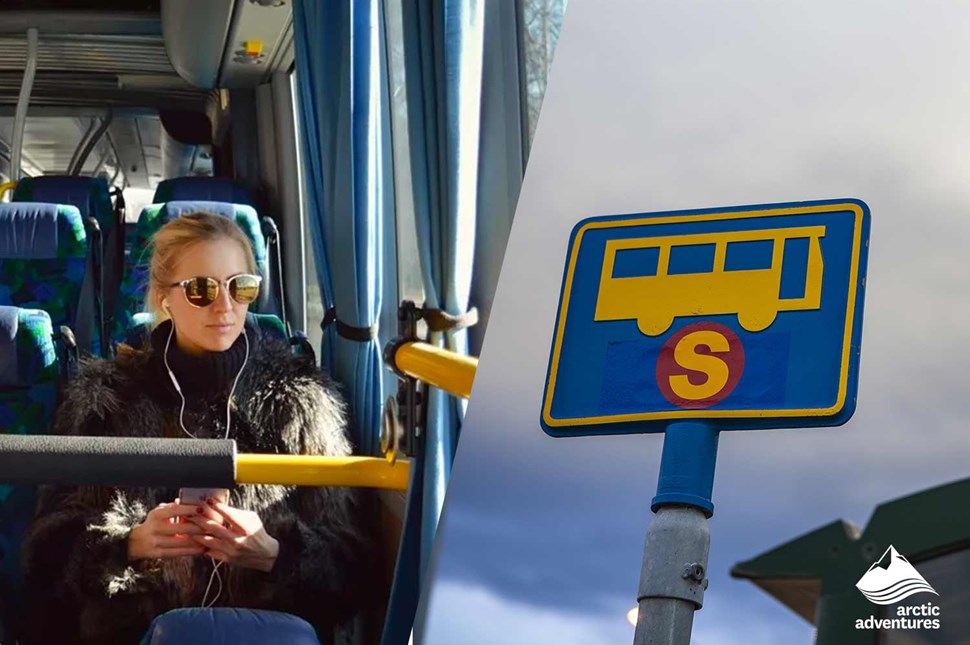
Unfortunately, there are no ride-sharing apps like Uber in Iceland, so taxis are another option for getting around but can be pricey. For travelers who want to venture out of the capital on their own, car rentals are a popular option. Alongside the major car rentals Hertz and Budget, travelers can even find environmentally-conscious rental agencies like Green Motion that specialize in eco-friendly vehicles.
Regardless of the season, your best bet for a rental car is a vehicle with four- or all-wheel drive, outfitted with all-weather tires. There are wonderful self-drive tour options where your car and accommodations are pre-booked for you. You will also receive a detailed itinerary with all the best attractions along your route highlighted. For the most hassle-free travel around Iceland we recommend downloading the following apps:
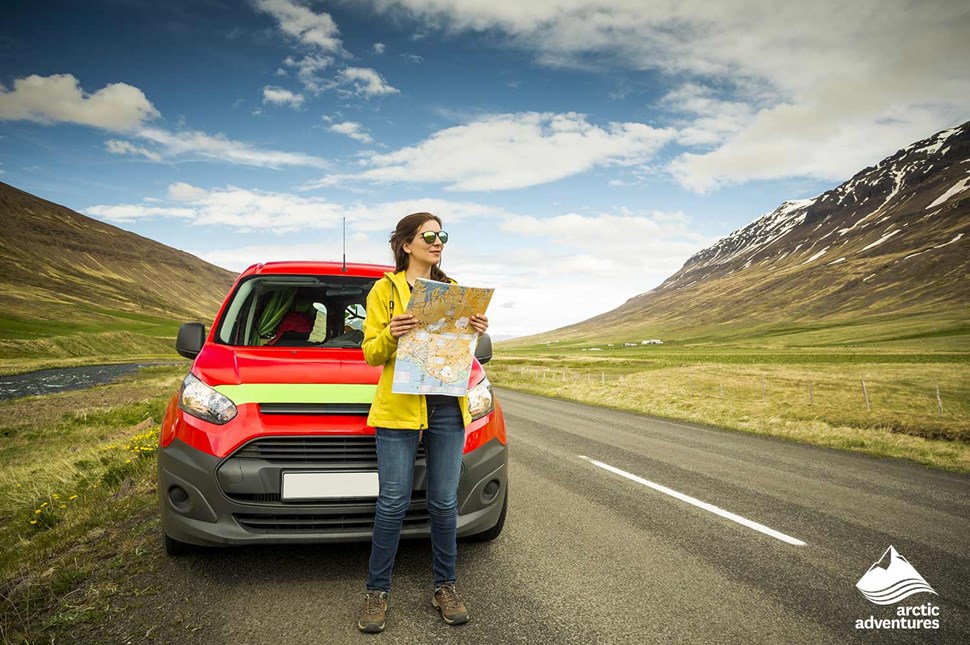
Or if you prefer to sit back and relax, book a guide-led tour and let someone else drive you around.
Iceland has three official national parks and four nature reserves. The parks were created to protect the unique geology and wildlife of the country and are managed and maintained by the Environment Agency of Iceland. Tourists can explore these stunning natural areas via various adventure tours that operate from the parks.
Established in 1930, Þingvellir National Park is the most historically significant of the parks. In 930 A.D the popular attraction was the founding site of the Alþingi, the world's oldest surviving parliament, which won it a spot on the UNESCO World Heritage site list. Þingvellir's natural features are just as unrivaled as its history. The park is divided between the Eurasian and North American tectonic plates, which creates stunningly rare geological features throughout the area.
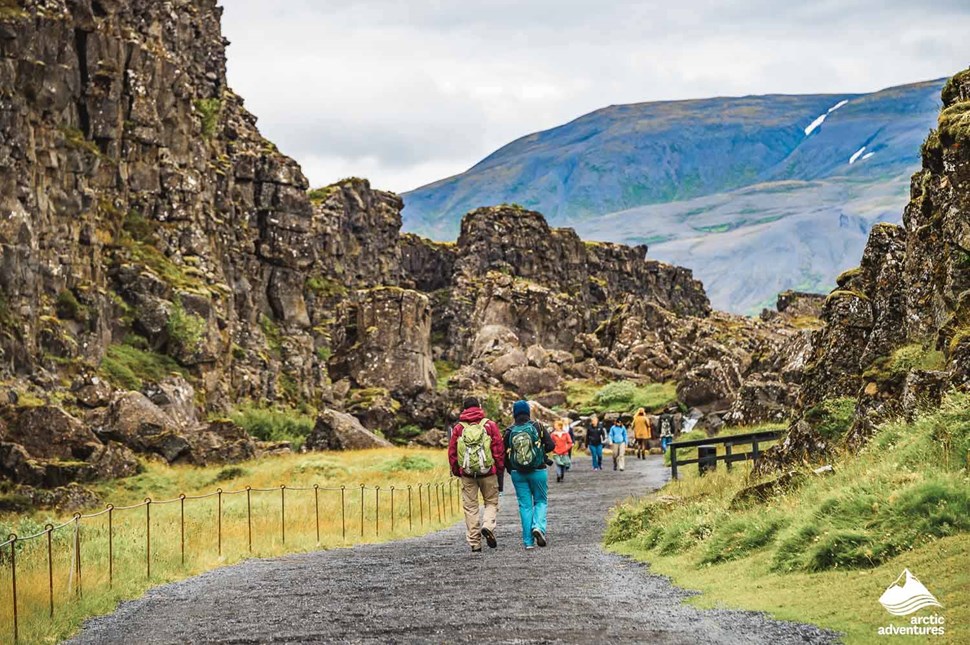
Snæfellsjökull National Park sits on the Snæfellsnes Peninsula in West Iceland and is the only coastal national park on the island. Visitors are stunned by the wonderfully diverse landscapes inside the area, which comprises black sand beaches, verdant cliffs, and vast glaciers. The contrasting natural features of Snæfellsjökull have earned it the name "Iceland in a nutshell."

Vatnajökull National Park is the largest national park in Europe. Established in 2008, the over 14.000km2 territory was created by joining the former Skaftafell and Jökulsárgljúfur national parks. The most famous feature of Vatnajökull is its self-titled glacier, which hosts countless ice caves. Most glacier and ice cave tours begin in and around the ice cap.
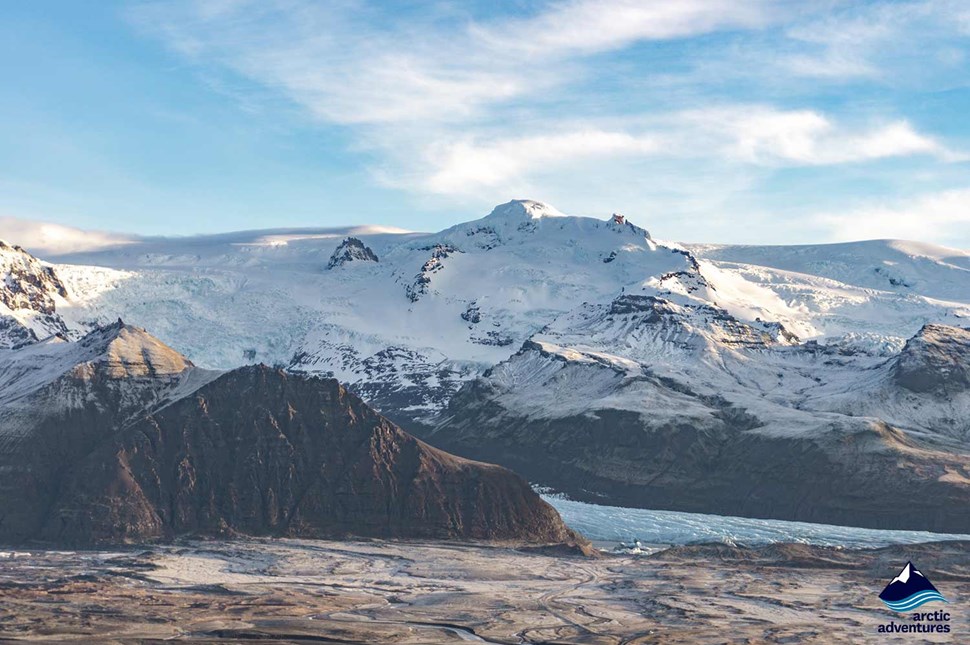
See more information on all the national parks and nature reserves on our best places to visit in Iceland page.
The land of fire and ice, Iceland has one of the highest concentrations of active volcanoes in the world. With 30 active volcano systems, there is an average of one eruption every five years. Most of the time these explosions are what they call “tourist eruptions,” harmless eruptions that create fantastic photos. However, in 2010 the infamous Eyjafjallajökull had such a massive eruption that the volcanic ash disrupted air travel worldwide.
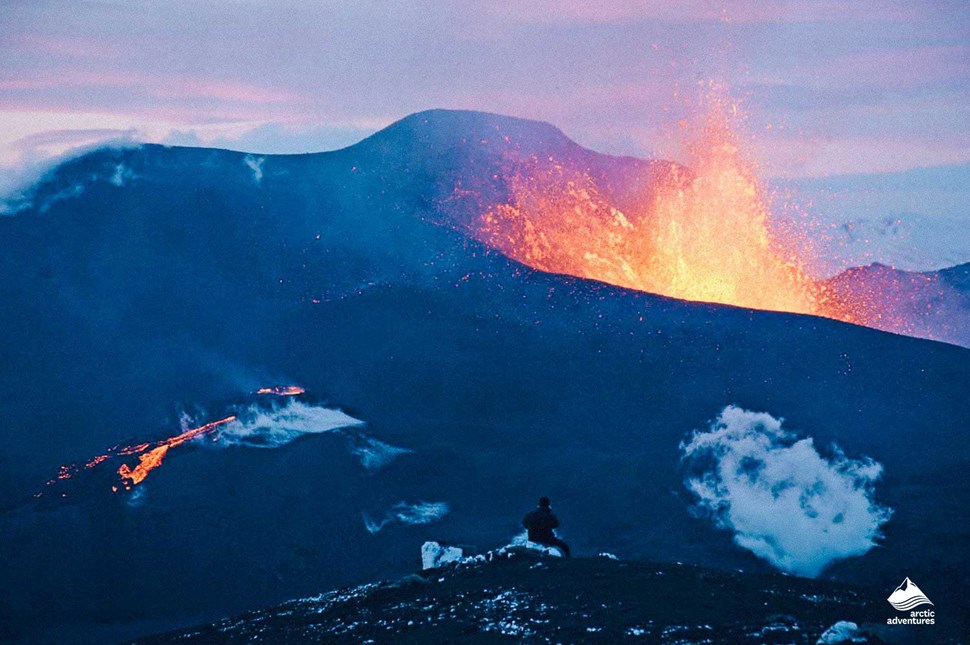
The most popular volcanoes to tour in Iceland include Hekla, an active volcano that has produced more lava in the last millennium than any other in the world; Öræfajökull, Iceland's largest volcano; and Katla, Eyjafjallajökull's explosive twin, surrounded by lava caves you can explore. Of course, you can't miss out on Snæfell, the world-famous volcano featured in Jules Verne's book A Journey to the Center of the Earth.
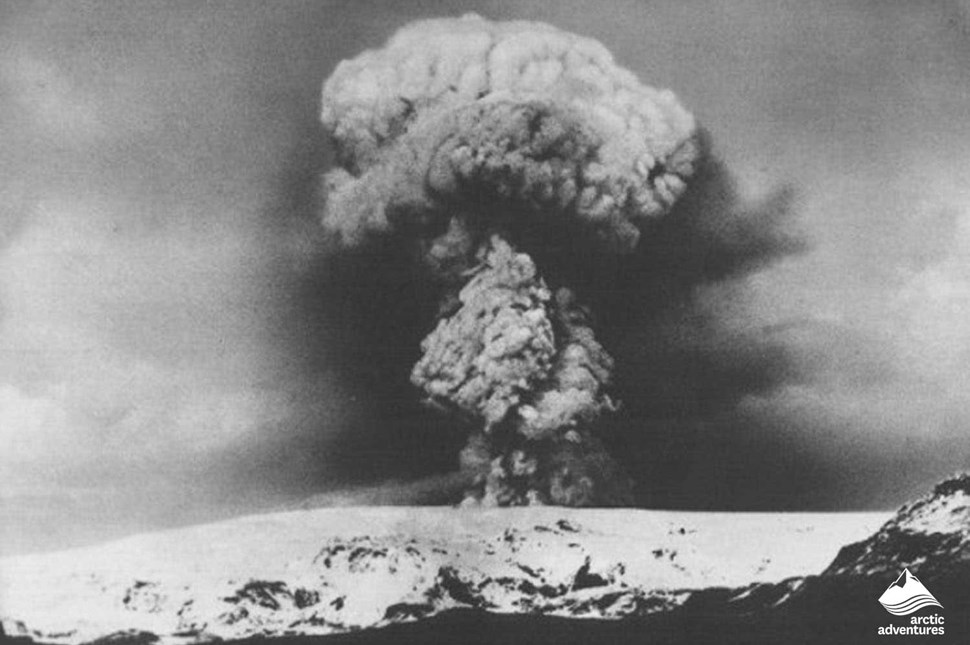
With 11% of the country covered with ice, Iceland's stunning glaciers and ice caves are major centers for adventure tours. The island is home to 269 named glaciers and countless ice caves below, where you can hike, snowmobile, and explore. While the ice caves are only safe to visit during the winter, the glaciers are covered in snow year-round and are a great excursion for every season.
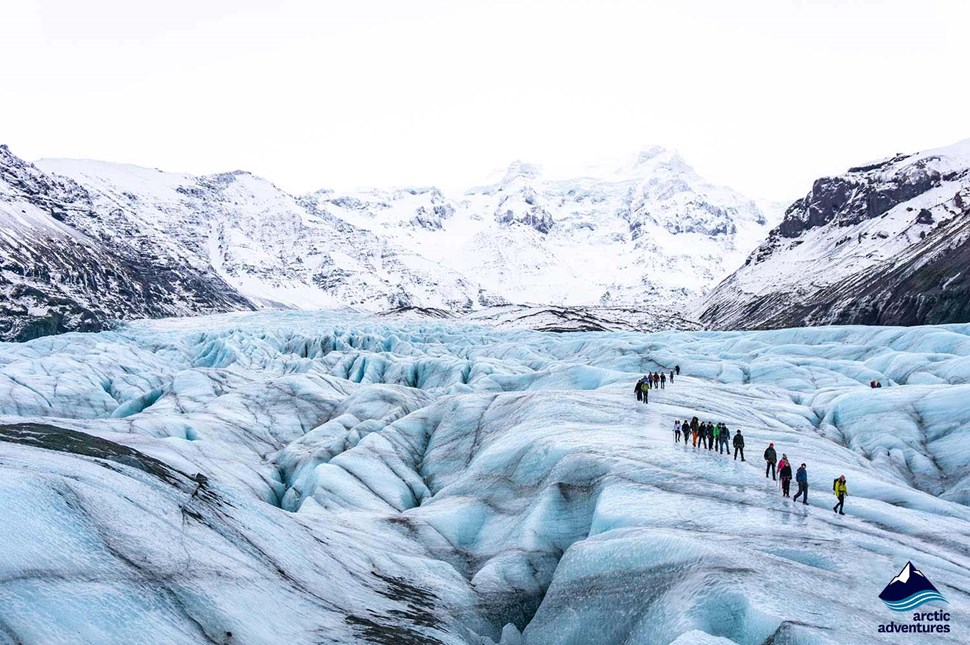
Most glacier and ice cave tours operate from Iceland's two largest glaciers, Vatnajökull and Langjökull. Vatnajökull is the largest glacier in both Iceland and Europe, and Langjökull is the country's second-largest ice cap and home to the world’s largest man-made ice cave. Don't miss out on these striking frozen attractions and book a glacier tour or ice cave tour.

Icelandic nature isn't the only highlight of the country. The rich culture and history of the country are just as fascinating as the natural attractions and are definitely worth exploring. And what better way to get in touch with local life than stopping at the idyllic towns and cities scattered across the island.
Most international flights arrive in Reykjavik, a small but vibrant capital city by the sea. While it is one of Europe's smallest capital cities, Reykjavik is exploding with quirky museums, unique shops, delicious restaurants, and a dynamic art scene. Tourists should spend at least two days exploring this great city. Just 15 minutes from the capital is Kópavogur (Seal Pup Bay), Iceland's second city. Tourists can enjoy horseback riding, shopping, or swimming in the country's biggest swimming pool.

While big cities are fun, it's the smaller towns that really exude Icelandic charm. Dalvík and Husavik are colorful fishing ports known for their unbeatable whale-watching opportunities. Northern tours boast a 99% success rate for whale sightings, so make to stop for some awesome marine life views.
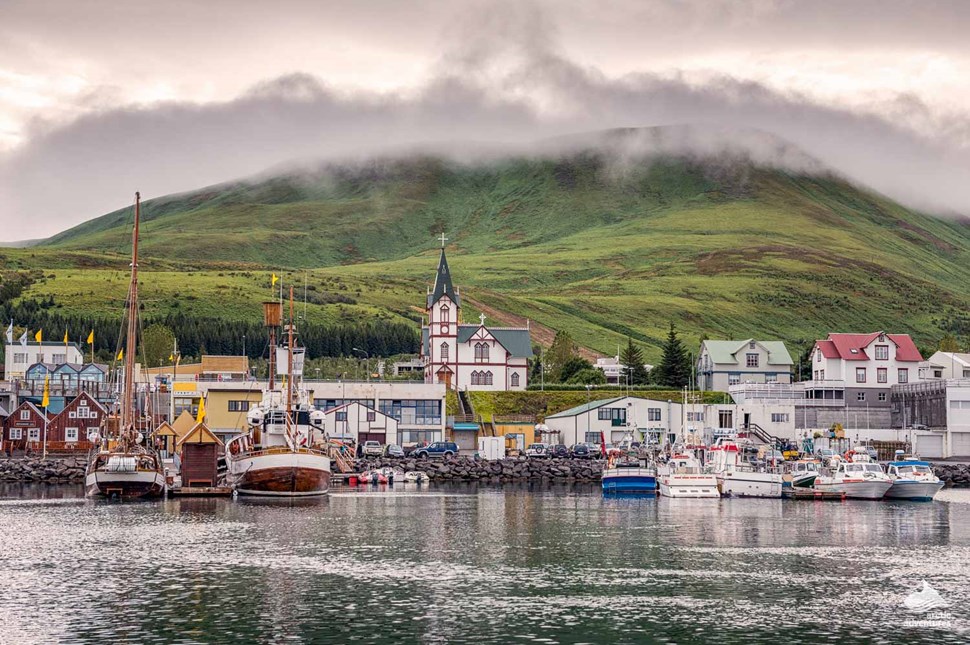
While the Eastfjords and Westfjords are regions known for their remote unspoiled nature, just on their outskirts sit the lively settlements of Egilsstadir and Isafjordur. Tourists can enjoy local food, history, and culture alongside exceptional nature and wildlife. Explore all the country's delightful cities and towns on our attractions in Iceland page.
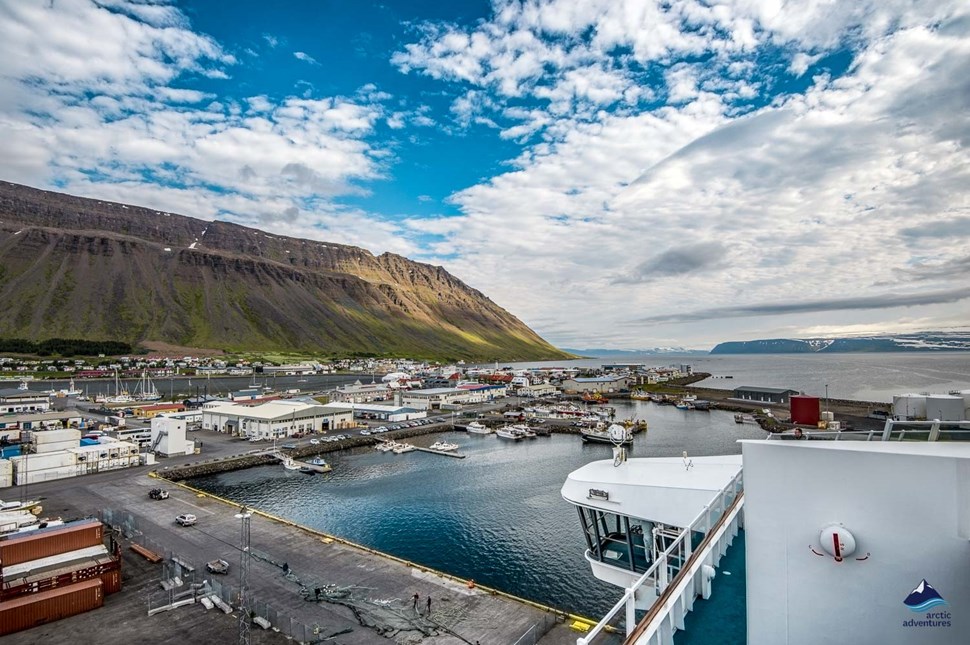
For more must-see locations check out our blog on the best places to visit in Iceland so you can create your own dream itinerary.
Silfra Fissure is a world-famous snorkeling and diving site. Nestled between the North American and Eurasian plates tectonic plates, it is the only place in the world you can swim between continents. Underwater you will be swept away by neon algae forests and giant basalt rocks.
The gorge boasts the clearest water on earth, so underwater adventurers get awesome views of the subterranean oasis below. No wonder Silfra was voted as one of the Top 10 things to Do in the World by Trip Advisor's Travelers’ Choice. The only way to experience Silfra is with an experienced tour guide, so if you want to try this unforgettable excursion book a Silfra tour.
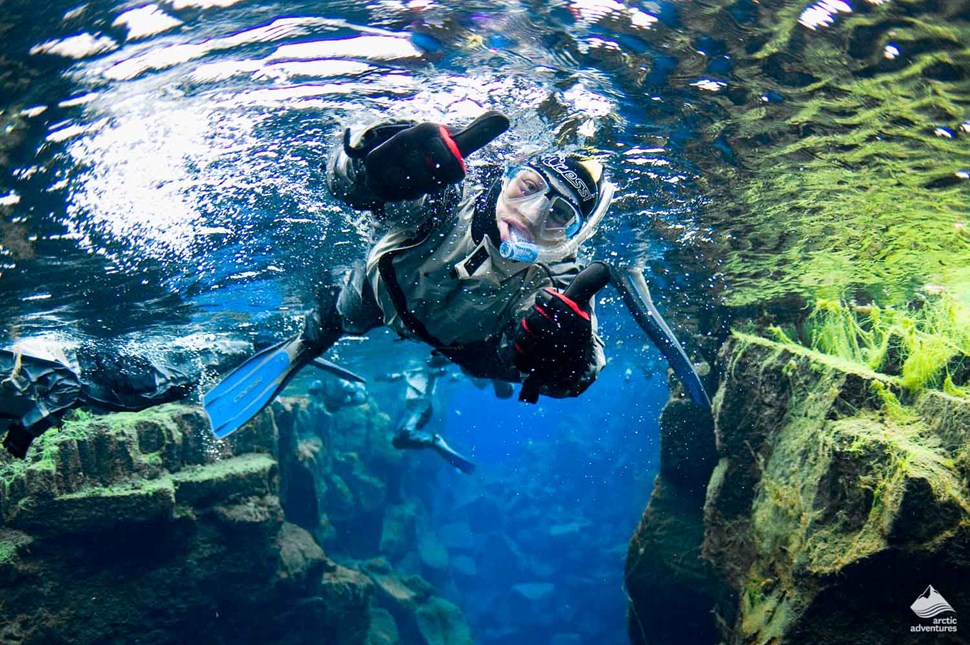
The Northern Lights are perhaps the most sought after sight in Iceland. From mid- September to mid-April charged particles from the sun enter the earth's atmosphere and cause a mystical green, yellow, and purple glow. Chasing these dancing auroras is the most mind-blowing winter activity and a once-in-a-lifetime experience.
The easiest way to catch this cosmic light show is to book a Northern Lights tour. Your expert guide will check the latest aurora weather forecasts so they can take you to the spots with the best views.
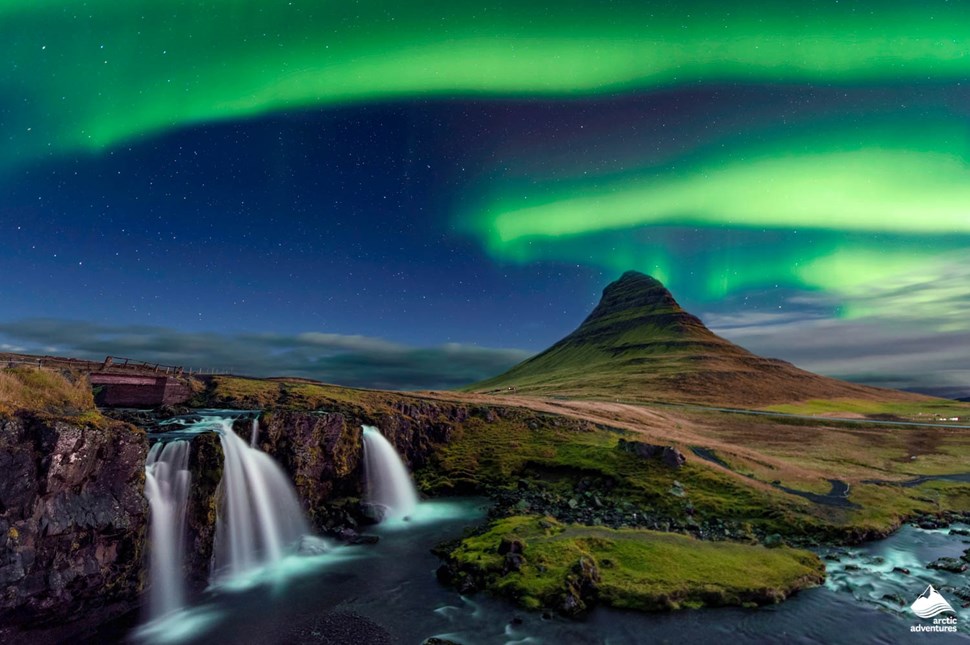
You can't leave Iceland without booking a whale watching tour. The island is renowned for its marine life and visitors can catch spectacular views from various harbors around the island.
Thanks to the favorable Icelandic waters, our whale watching tours enjoy a 98% success rate for whale sightings - so don't forget your camera! The most common sea creatures seen on tours include minke whales, humpback whales, dolphins, and porpoises.
These spectacular excursions are open to all ages and have departure options from Reykjavik, Dalvik, and Western Iceland year-round.
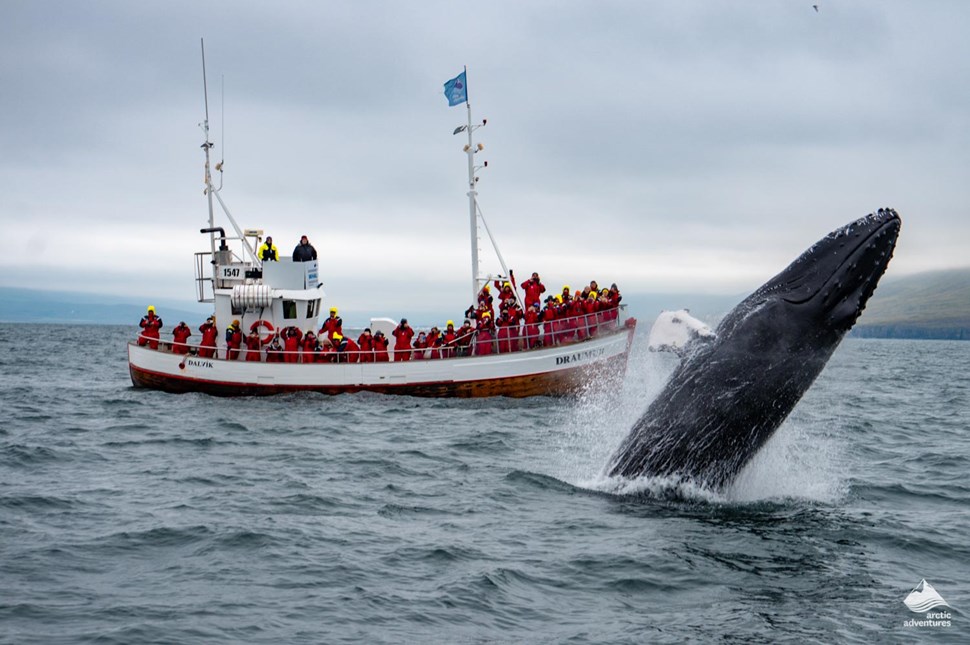
Can't decide which Iceland attractions you want to see? Hit them all up on a Ring Road road trip. The 830-mi (1330-km) route wraps around the entire island, connecting all the country's best attractions. More than just a link from point A to point B, the route boasts some magnificent scenery along the way. You'll pass mesmerizing landscapes featuring stratovolcanoes, black sand beaches, hot springs, glaciers, fjords, and towns.
If you want to see all Iceland has to offer then a multi-day Ring Road tour is the perfect option. Try our amazing 6-Day Tour around the Ring Road, awarded Tour of the Year by Tourradar in 2017, 2018, and 2019. Or hit the open road on your own with a Ring Road self-drive tour, which includes rental, accommodations, and itinerary.
For our full guide to all the coolest bucket list activities in Iceland and how to visit check out our 15 Best Things to Do in Iceland Blog. Don’t miss out on all the country highlights and hidden gems!

Tasting the local cuisine in Iceland is an adventure all on its own. From the national dish Hakarl, fermented shark, to the Icelandic favorite Skyr, a sour milk cheese, there are plenty of dishes for travelers with bold palates.
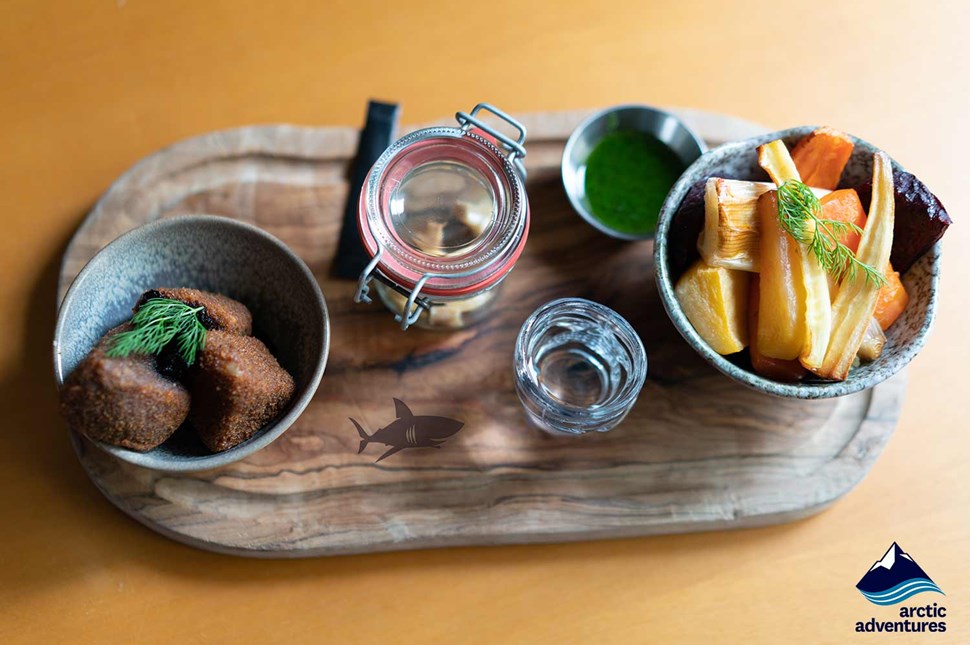
However, if you're looking for something a bit more mainstream, there are tons of restaurants, bars, and roadside eateries for all tastes. Vegan and vegetarian foodies can also find plenty of options, with many spots serving locally produced products.
Travelers on a budget might squirm at the expensive food prices in Iceland, but if you know where to go you can still find some tasty options that won't break the bank. Hot dogs (known locally as Pylsur) are a cheap fast-food favorite on the island, and you can find stands all across Reykjavik. Hot dogs in Iceland might sound odd, but their world-famous stands have attracted celebrities including Bill Clinton and the Kardashians.

Check out our Where to Eat in Iceland page to plan your foodie itinerary, as well as our Cheap Eats in Reykjavik blog for quick bites under $10.
Iceland is famous for its pristine wilderness, an environment protected by green initiatives and responsible tourism. The country is at the forefront of ecotourism, a practice that combines conservation, sustainability, local culture and education, and responsible travelers play a huge role.
Anyone who chooses Iceland as their next travel destination is already on their way to being a responsible traveler. Most of the tour operators and hotels engage in sustainable practices and almost 100% of the island's electricity comes from renewable energy. So where do you come in?
The mantra for ecotourism is to leave only footprints. Here some ways to minimize your environmental footprint:
For more tips on how to be a responsible traveler in Iceland and on tours, check out our responsible travel in Iceland: how to be friendly to nature blog.
Ranked as one of the safest countries in the world, Iceland is a popular choice for travelers worried about security. However, while man-made crime is almost non-existent, hazards in nature, extreme weather, and tricky road conditions can present a risk to travelers who aren't prepared.

Self-drive tours around Iceland are a tourist favorite for exploring the country, but before you hit the road it's important you are aware of how to navigate safely. The Ring Road is the main island route and circles the entire country. In the summer this scenic route is an easy drive, with plenty of accessible tourist attractions along the way.
Still drivers should familiarize themselves with basic laws of the road and tips. For example, Iceland might be a small country, but it is also extremely remote, so gas stations are sometimes far and few between. Drivers should always fill up their tank every chance they get. For more detailed information check our ultimate guide to driving in Iceland.
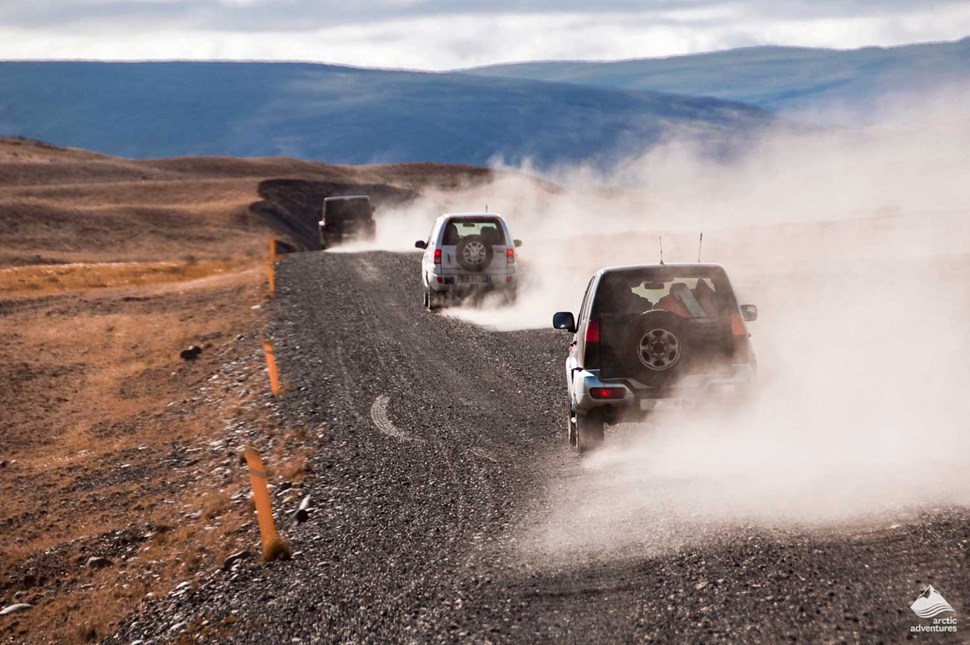
As for the winter months, icy roads can make some roads a bit perilous and drivers must exercise more caution. No matter the season, it’s always smart to check the weather and road conditions on the Icelandic Road and Coastal Administration (IRCA) website or app before and during your trip.
If you are hesitant about driving during the winter, booking a tour is your best bet. Tour guides are experienced drivers on Icelandic winter roads and have the proper vehicles to ensure your safety. For more information on Iceland road safety in the winter check our page here.

Summer or winter, you never know what Icelandic weather is going to do, so what do you pack? Forget checking the forecast before your trip and prepare to gear up for every climate. Because the weather can change on a dime, layers will be your best friend.
T-shirts, fleeces, base layers, thermal tops, leggings, waterproof hiking pants, sturdy shoes, a waterproof jacket, and a swimsuit are some essentials you shouldn't leave without. While a swimsuit might not be the first item you might think to pack for glacial Iceland, the country is overflowing with natural hot springs where visitors can soak.
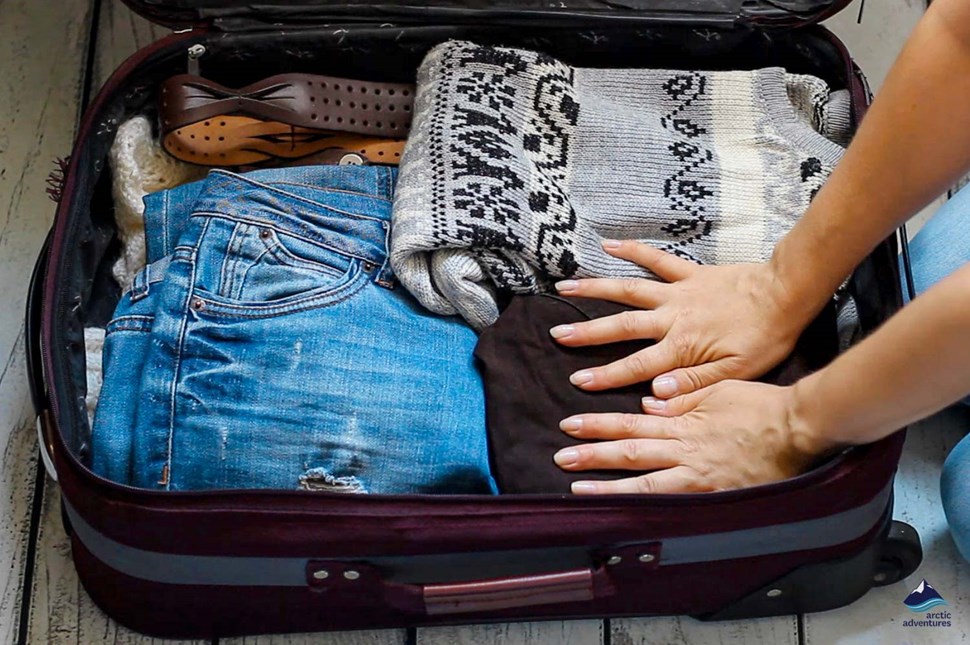
As an adventure travel destination, we recommend you leave your fancy clothes behind. However, If you plan on sampling the Reykjavík nightlife pack a nice outfit and shoes that won't take up too much space. For more packing tips and our list of items you should always have in your bag while traveling in Iceland, check out our blog here.